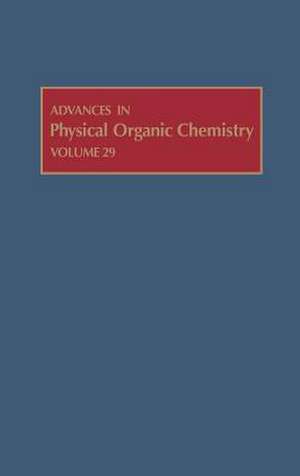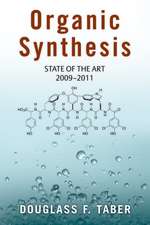Advances in Physical Organic Chemistry: Advances in Physical Organic Chemistry, cartea 29
D. Bethellen Limba Engleză Hardback – 26 ian 1994
- Electron storage and transfer in organic redox systems with multiple electrophores
- Chirality and molecular recognition in monolayers at the air/water interface
- Transition state theory revisited
- Neighboring group participation by carbonyl groups in ester hydrolysis
- Electrophilic bromination of carbonDcarbon double bonds: structure solvent and mechanism
Preț: 881.29 lei
Preț vechi: 1207.24 lei
-27% Nou
Puncte Express: 1322
Preț estimativ în valută:
168.64€ • 180.33$ • 140.60£
168.64€ • 180.33$ • 140.60£
Carte tipărită la comandă
Preluare comenzi: 021 569.72.76
Specificații
ISBN-13: 9780120335299
ISBN-10: 0120335298
Pagini: 368
Dimensiuni: 152 x 229 x 21 mm
Greutate: 0.69 kg
Editura: ELSEVIER SCIENCE
Seria Advances in Physical Organic Chemistry
ISBN-10: 0120335298
Pagini: 368
Dimensiuni: 152 x 229 x 21 mm
Greutate: 0.69 kg
Editura: ELSEVIER SCIENCE
Seria Advances in Physical Organic Chemistry
Public țintă
Physical chemists, organic chemists, solid state scientists, and crystallographers.Cuprins
Electron Storage and Transfer in Organic Redox Systems with Multiple Electrophores. Chirality and Molecular Recognition in Monolayers at the Air/Water Interface. Transition State Theory Revisited. Neighboring Group Participation by Carbonyl Groups in Ester Hydrolysis. Electrophilic Bromination of Carbon Carbon Double Bonds: Structure Solvent and Mechanism.















